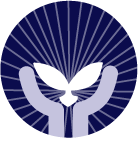Online Video Recordings of Dr. Suzuki at the 1976 American Suzuki Institute

The ISA is pleased to offer this link to the extensive Suzuki video archive at the University of Wisconsin/Stevens Point. These videos document Dr. Suzuki's visit to the American Suzuki Institute in 1976 in lessons, group classes and teachers’ sessions. The videos are a treasure-trove of inspiration from the founder of the Talent Education movement, and showcase Dr Suzuki’s teaching principles in action. We are indebted to the University for maintaining this archive and making it available to the public. We also thank the Aber Suzuki Center at UWSP for their stewardship of this priceless collection of Dr. Suzuki’s teaching, and to Patricia D'Ercole for her assistance in bringing this collection to the world-wide Suzuki community.
Use this link to access all videos: https://search.library.wisc.edu/digital/ASuzuki
"The American Suzuki Institute at the University of Wisconsin-Stevens Point: The Suzuki Method in Action," is the title of a collection of videos which chronicles the two weeks of Dr. Suzuki's teaching at the American Suzuki Institute in August 1976. The videos, originally recorded on 1-inch cassettes, have been digitized and stored on the UW System Digital Collections site and will be preserved for free viewing by anyone for generations to come. Initiated by Pat D'Ercole, the digitization project was a joint venture between the ISA and the University of Wisconsin System Library Collection.
The 35 videos are usually about 50 minutes in length. Twenty-three videos are nonedited recordings of Dr. Suzuki teaching children in master classes and in groups. Unedited recordings of lectures given to teachers are also among these videos, as well as the speech he gave after receiving the first Suzuki Chair Award (titled, A lecture on the mother tongue method given by Shin'ichi Suzuki at the American Suzuki Institute, Stevens Point, WI., August 8, 1976). This award was presented by UWSP Chancellor Lee Dreyfus to Dr. Suzuki and his acceptance speech contains many of the same sentiments he presented the United Nations in 1968. It is truly inspiring to see and hear him plead for a peaceful world and for parents to be educated so that they will understand the importance of providing a quality environment for their children.
Twelve of the videos are titled, "A lecture and demonstration lesson on..." (The thumbnail for these is blank.) They are edited videos taken from the original footage and organized by topic. Graduate students studying at UWSP at the time of Dr. Suzuki's visit watched each of the lectures. When Dr. Suzuki discussed string crossing for example, that clip was isolated and added to the video about string crossing. When he addressed the left hand, that clip was added to the video of that topic. Of course, string playing is very inter-connected, so there is some overlap, but the description that appears after clicking on a video gives a very detailed account of the topics covered on each tape. This is true of the unedited recordings as well. Lectures, master classes and/or violin class video descriptions list what repertoire was played in each.
Just as the invention of the records made it possible for students to hear and learn to play their instrument, the advent of video recording preserved Dr. Suzuki's teaching as a model and primary source for research. And now, the internet makes it possible for all, in the comfort of their home, to sit at the feet of the Master and learn from him.

